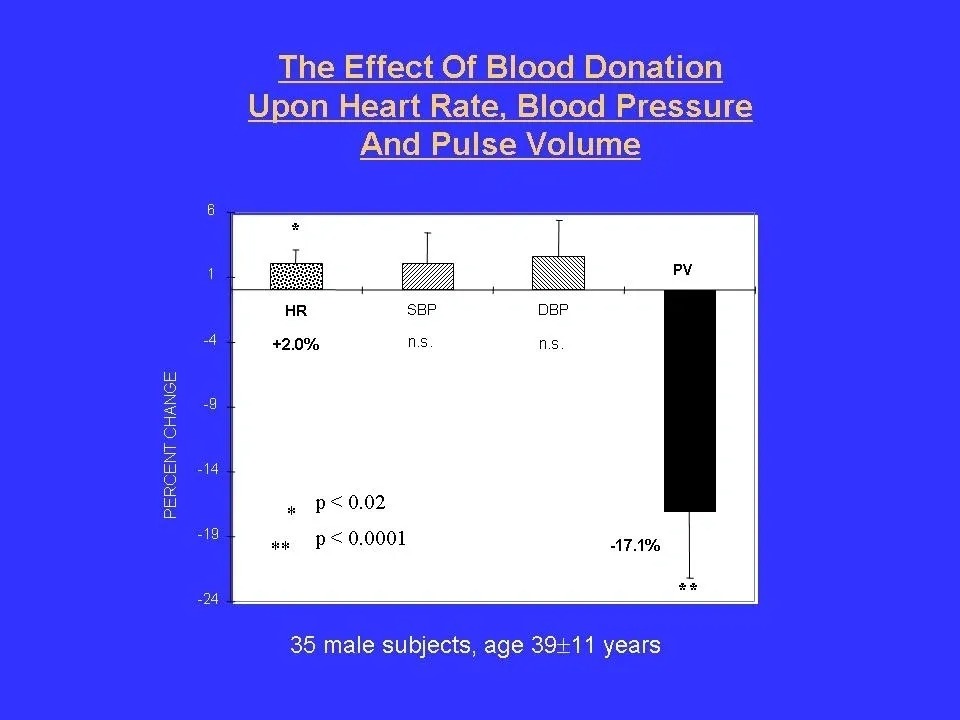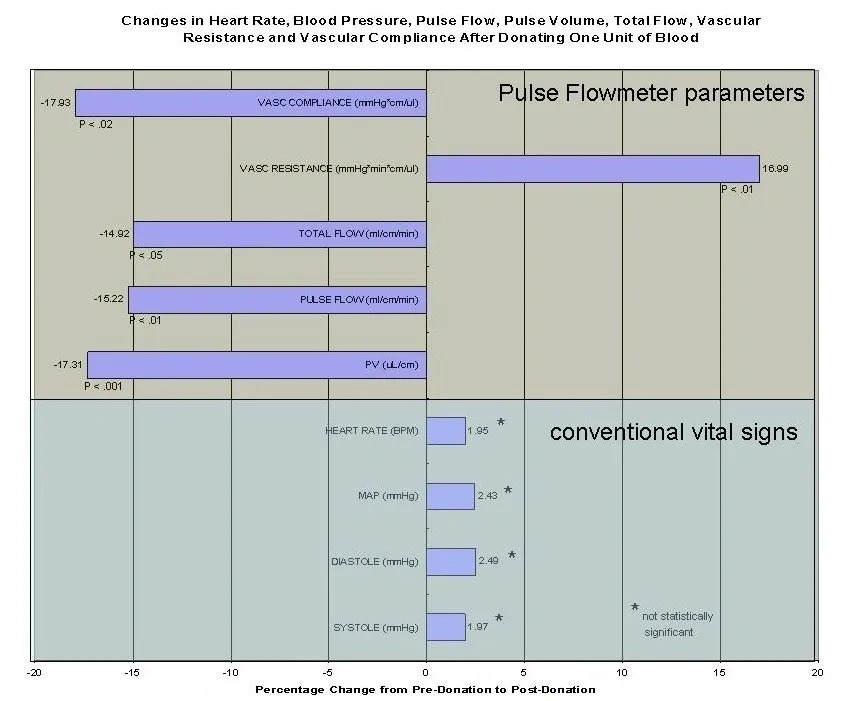
Pulse Flow Measurements
Pulse Flow Measurements were made on 35 blood donors before and after they gave blood. Heart rate and blood pressure did not change, but pulse volume dropped by greater than 17% ( p< .005 ). The illustration of this result is directly below.
Directly below this graph is a detailed description of the clinical trial and a more detailed bar graph illustrating all of the Pulse Flowmeter parameters.
This study was conducted to determine if changes in Peripheral Pulse Volume and Flow occur prior to significant changes in heart rate (HR) or blood pressure (BP).
HR, systolic BP (SBP), diastolic BP (DBP), and calf PPV were measured in 35 blood donors (male, weight=87.7±15.3[sd] kg, age=38.7±11.1[sd] yrs) before and after donating one unit of whole blood (the average blood loss was 5.3±.9[sd] ml/kg). Pre and post-donation measurements were compared using paired Student’s t-test. There were no significant changes in either SBP or DBP. The HR increased significantly (p<0.02), but by only 2.0%, a clinically insignificant change. In contrast, PPV decreased by 17.1% (p<0.0001). The magnitude of the PPV decrease correlated with the blood loss per kg (r=0.46,p<0.01). We concluded that a significant change in PPV occurs with relatively minor blood loss and that pulse volume analysis may therefore provide an early indication of hypovolemia due to acute blood loss.

